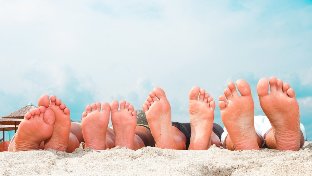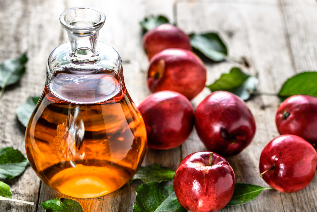Fungal infections (mycoses) are among the dermatological diseases are the most frequent. Infection with the pathogen is possible in several ways, and the small symptoms of the disease in the early stage of its development and not all patients for a time makes you go to the doctor. The result of the pathological process covers the entire territory of the greater part of the limbs (mostly the legs) and spread deeper in the tissues. Work foot fungus is treatable, but in order to fully fight off the infection, sometimes it takes several months of hard therapy.

Causes of foot fungus
The fungus develops as a result of penetration in the subcutaneous layers of the spores of pathogenic micro-organisms. Lose only the skin are called dermatomycoses, destruction of the nail plates under the action of the fungus is onychomycosis.
Infection with the pathogen occurs in two ways – direct and indirect. In the first case, fungi, spores can remain in the soil on the tiles, wooden surfaces. In the second the infection is transmitted through personal items – washcloths, Slippers, towels, manicure instruments.
Fungal microorganisms for a long time remain viable in warm, damp places that is why the infection often occurs in swimming pools, beaches, in bathhouses, gyms and saunas.
The risk of penetration of the microorganism in the skin, is greatly increased if your feet have hair fractures – abrasions, scrapes, blisters. Susceptibility of the fungus increased under the influence of the predisposing disease factors:
- reduced body resistance, there is an insufficient immune system;
- failure to comply with the hygienic norms;
- sweating;
- diseases of the endocrine system that occur with metabolic disorders. Fungal infections characteristic of patients with diabetes;
- violation of blood circulation in the lower limbs, which may be associated with vascular pathologies or deformities of the feet;
- wearing tight, poorly ventilated shoes. The leg, being in such circumstances, constantly sweating, there are scuffs and scratches, which is suitable for reproduction of the fungus of environment;
- age. Yeast infection is common among children and older persons, these categories of patients the skin is thin and its protective properties are reduced, which creates the prerequisites for the ingress of infection.
- excessive dryness of the skin. Hydrated skin has a surface fatty film that prevents the penetration of pathogenic microorganisms. To increase the dryness there is no such protection, which allows the fungal spores to penetrate easily inside.
The probability of developing a yeast infection is much greater if the body is exposed to several diseases predisposing factors.
Species of fungi,
Of the disease depending on the type of fungus are classified as:
- the athlete's foot. Called flexible Trichophytonmcntagrophytes;
- the rubrofitii. Are found in 70% of cases of athlete's foot.
Depending on the localization of pathologic process there are:
- fungal infections between your toes (dermatophytosis). This files most often takes the form of intertriginous (acute) yeast infection;
- plantar athlete's foot. The main symptoms – peeling of the skin, which if the disease goes into actinic;
- the skin stop. The pathological process begins with the formation of the lesions, similar in form to allergic manifestations;
- the deep form of the mycosis. The infection affects the superficial and deep layers of the skin stop;
- onychomycosis – a fungal infection of the nail plate. Rarely isolated, in most cases is a complication of plantar superficial mycoses.

Symptoms of pathology
The initial stage of the disease often occurs with deleted characters. The appearance of scaly spots, mild redness and itching is often not taken seriously, and using different types of treatments of itching and inflammation reduces the symptoms, but the fungus does not die. It is, however, the infection continues to evolve and gradually becomes chronic. Symptoms depend on the form of the disease and its duration.
- form interdigital mycosis characterized by the appearance of redness and burning between the toes. Inflammatory process, infection rarely extends beyond the interdigital spaces. As a rule, the symptoms subside in the winter and in the summer period of time getting worse;
- a fungal infection occurs with peeling of the epidermis and redness of certain parts of the feet. Occasionally there is severe itching;
- hyperkeratotic form. Is characterized by the formation of watery papules or plaques in blue color, with a rough surface. Individual pockets and a merge, on the heels of the cracks;
- disgidroticheskaya form. The main characters – the emergence of a large number of watery vesicles, which eventually opened up and in their place are wounds. In advanced stages, this disease is often confused with eczema.
- onychomycosis is manifested by the color change of the nail plate, the appearance of it on dark or bright spots and stripes and the stratification of the nails and thickening.
With the onset of burning, redness, peeling, itching of the feet and legs should as soon as possible to consult a doctor. In the early stage of the disease is easy to treat with foreign assets.
Diagnosis
With the suspicion of a fungal infection, you must consult a dermatologist. An experienced physician on the basis of complaints from the patient and the examination sets the diagnosis. But, to confirm and determine the type of pathogen required lab tests. Their application allows to set the type of the microorganism, which requires the correct treatment regime.
Treatments
Drug therapy is chosen on the basis of the stage of disease, patient age, comorbidities, and complications. Treatment should be comprehensive, consisting in the use of external and systemic remedies, traditional methods.
Additionally, your doctor may prescribe a multivitamin complexes, they improve the immune system. In severe itching in the acute stage of the disease to relieve irritation help of antihistamines. When you join secondary infection requires treatment with antibiotics.
Fungus, you must remove and personal items. First, you need to treat the shoes with a disinfectant, and it is better to completely replace it with a new one.
After the detection of the infection can not forget that most likely are infected with the fungus, and the other members of the family. So, to recover you need to use your own personal hygiene items, towels and Slippers. Of fungi, the spores are destroyed under high temperatures, so you need to iron underwear and bed linens, and even socks.
Local agents
Local antifungal agents – ointments, gels, emulsions and solutions. Reason external remedies for the affects the skin of the feet after processing. It is enough to make a foot bath with potassium permanganate, soda or soap. The procedure time is 15 minutes after the skin is dried and applied to a particular institution.
Onychomycosis prior to application of the ointment or solution is to remove the top part of the affected nail. The nail plate is softened by using a special keratolytic remedies. If this is not done, then the components of the ointments will not fall into the lower layers of the nail, i.e. where the growing fungal colony.
With the defeat of the nail system of the fungus, sometimes it is necessary to drink for 12 months or more. Scheme of medication of the patient prescribed by the doctor.

Folk remedies
How to get rid of foot fungus at home? You need to remember that the use of all kinds of "grandma recipes" as the main therapy ensures that the infection is subsiding, but not completely go away. This leads to the fact that the fungus over time, re-aktiviziruyutsya. Thus, the traditional antifungal agents should be combined with therapy.
To defeat the yeast infection you can stop using the trays, prepare ointments, rubbing.
- antifungal properties have baths with salt, juice and soap. 5 liters of hot water should be taken 2 spoons of salt and soda, RUB in the solution of one-quarter of a piece of soap. In this water foot stand half an hour, then dried and applied to the skin and nail antifungal medication;
- interdigital space, and fungal lesions of the feet can be greased with birch tar. The procedure is best done at night, of your feet wear clean socks;
- the apple cider vinegar must be mixed with an equal amount of an alcoholic solution of iodine. In the resulting fluid moisten swabs and dip them well-affected areas of the feet;
- the garlic oil. The garlic cloves should be crushed into pulp and combine with butter or pork lard. As a result of the ointment used for treatment stop.
Fungus treatment on legs folk ways several weeks in a row. It is desirable to periodically change the assets, it will increase the efficiency of the therapy.
Prevention of infection
To prevent infection it is not always possible. But you can reduce the risk of infection fungal pathogens to a minimum. You have to obey the following rules.
- In public places where need indoor shoes, to take just on their own.
- Do not use other people's personal hygiene items.
- Formed on the legs scratches, it's taking care and abrasions treated immediately.
- Wear only high-quality, well-ventilated shoes.
- Always observe the rules of hygiene.
The likelihood of any infection is reduced, when the good work of the immune system. To improve the condition of the protective forces helps of rational nutrition, vitamin therapy, hardening. Need and the treatment of all chronic diseases.
Conclusion
Nail fungus is not dangerous, but very uncomfortable in its manifestations and consequences of the pathology. To cope with the infection with the help of modern pharmaceutical drugs can be just a few days, but under one condition – wrinkle treatment of a doctor.





























